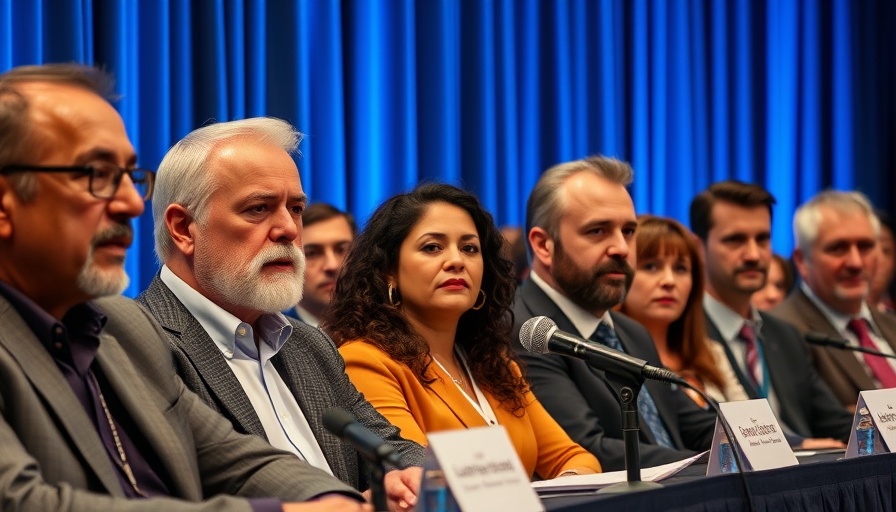
Concerns Over Reduction of Loss and Damage Fund for Vulnerable Nations
As the climate crisis escalates, the latest meeting of the Loss and Damage fund board has raised alarm bells among civil society organizations. They expressed profound concern over a significant scaling down of a fund originally established to assist vulnerable nations in coping with climate-related risks. During the fifth meeting held in Barbados, board members from wealthier nations proposed a reduction in the fund's budget, decreasing its total from approximately US$300 million to US$250 million for the vital pilot phase aimed at tackling climate challenges.
This reduction comes more than three years after the fund was agreed upon at COP27 in Egypt, a strategic move that aims to offer some relief to developing countries that have long demanded compensation for their climate-related losses. The diminished funding allocation raises concerns about the fund’s ability to effectively assist nations heavily impacted by climate change, often left vulnerable and without the necessary resources to implement sustainable practices.
A Glimpse at Global Perspectives on Climate Aid
The disbursement of US$300 million to particularly impoverished nations under the pilot phase may seem substantial, but some board representatives highlight a critical issue: this allocation could limit the reserves for emergency situations that arise, such as catastrophic storms and flooding. With many nations facing severe climate risks, the importance of ensuring full funding cannot be overstated.
Although developed nations have pledged close to US$800 million, only US$321 million has been contributed thus far. This disparity indicates a troubling trend in commitments made by wealthier jurisdictions, raising questions about the sincerity and accountability of their promises. Financial insecurity for SIDS (Small Island Developing States) and LDCs (Least Developed Countries) could lead to deeper levels of vulnerability and hinder their ability to move toward sustainable living and clean energy solutions.
The Discrepancy in Allocation Criteria
At the board meeting, more than just fiscal concerns were debated. The Loss and Damage Collaboration noted that a proposed requirement from wealthier nations that a minimum of 50% of the fund would be allocated for SIDS and LDCs serves as a tactic to restrict support from countries deemed capable of handling climate impacts without external aid, such as China and Saudi Arabia. Teo Ormond-Skeaping from the Collaboration expressed worries that maintaining the fund’s financial size could become a limiting factor if initial commitments fall short.
This sentiment encapsulates a more considerable ideological struggle: balancing financial trust with equitable delivery of resources to developing nations. Without a clear indication that available funds will rise to meet future demands, there’s potential for stagnation in climate mitigation efforts.
Historical Context: Building the Framework for Support
The historical context surrounding the establishment of the Loss and Damage fund is indicative of broader trends in international negotiations. While COP talks traditionally struggle with getting developed nations to acknowledge their responsibilities, the establishment of this fund marked a pivotal step toward recognizing the necessary support for vulnerable communities. However, with its current scaled-down resources, it raises critical questions on the effectiveness and future of climate aid initiatives.
This pattern mirrors past negotiations surrounding climate action where commitments often lag behind action. Drawing significant lessons from previous COP meetings reminds us of the importance of acknowledging vulnerabilities and adapting responsive strategies to environmental crises.
Looking Ahead: Future Predictions and Opportunities
As we look to the future, the prospect of turning challenges into opportunities for sustainable development exists. Experts predict that not only does the climate crisis necessitate financial support but will also lead to enhanced innovation in green technology and renewable energy sectors, paving the way for resilient communities.
The fundamental aim should be to push for sustainable practices that not only benefit vulnerable nations but also contribute to global sustainability goals. Initiatives that support circular economies, eco-friendly transportation systems, and sustainable agriculture practices can fill gaps left by inadequate funding in the Loss and Damage fund.
Conscious Living: A Call for Action
The global community's collective responsibility in combating climate change is clear. By understanding the critical dynamics between stakeholders, it becomes increasingly necessary for eco-conscious consumers to advocate for sustainability initiatives and hold governments accountable for climate commitments. Engaging in environmental stewardship, supporting green businesses, and adopting a zero-waste lifestyle not only mitigates the impacts of climate change but accelerates movement towards a more sustainable future.
In conclusion, we must push for greater transparency, accountability, and commitment from developed nations. It is crucial to sustain momentum toward not only achieving the initial goals laid out by the Loss and Damage fund but also scaling up efforts in the face of a pressing climate crisis. Join the movement to advocate for sustainable practices, take conscious steps, and amplify the voices of vulnerable communities to ensure that climate support is not just a promise—it's a reality.
 Add Row
Add Row  Add
Add 



Write A Comment